- Home
- TV History
- Network Studios History
- Cameras
- Archives
- Viewseum
- About / Comments
Skip to content


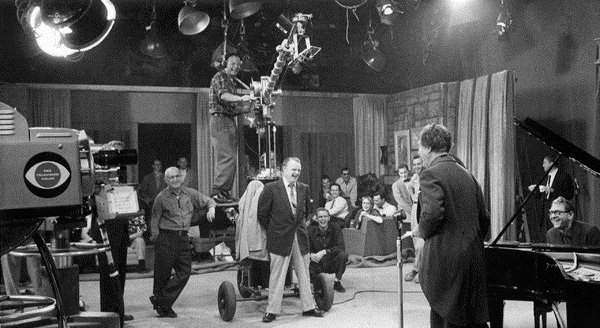









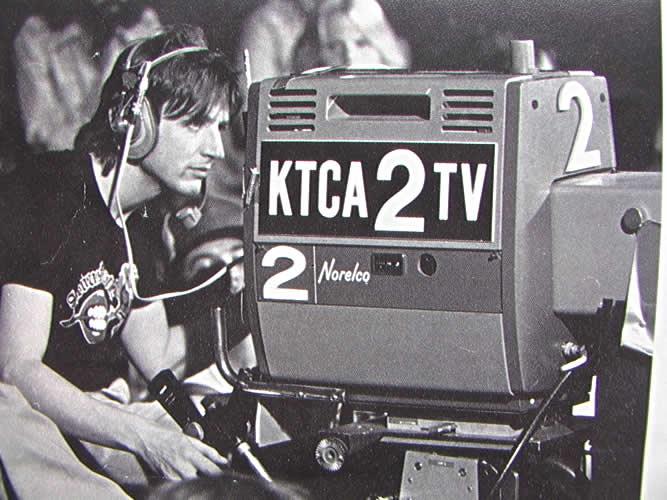



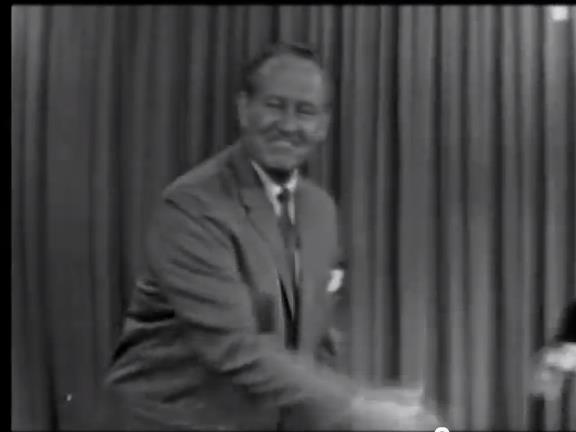















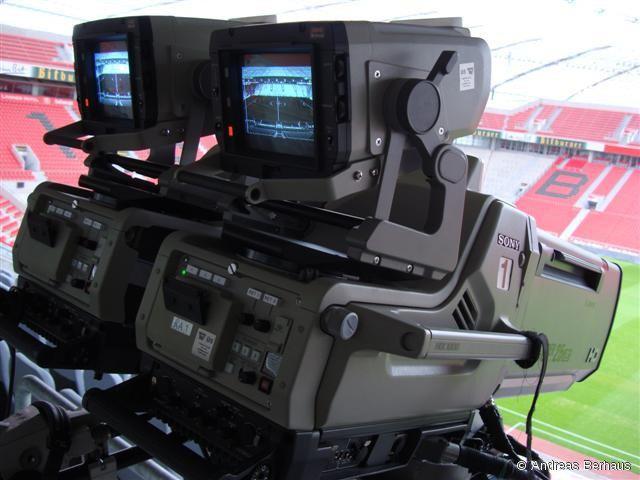

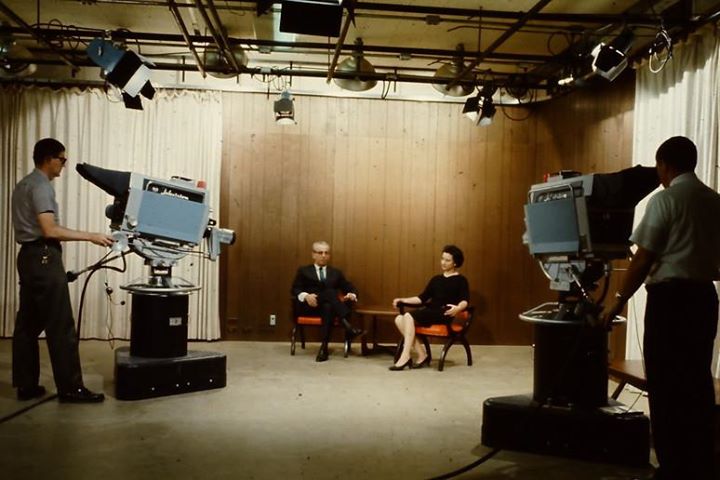



Posts in Category: TV History
Page 133 of 136
« Previous
1
2
3
4
5
6
7
8
9
10
11
12
13
14
15
16
17
18
19
20
21
22
23
24
25
26
27
28
29
30
31
32
33
34
35
36
37
38
39
40
41
42
43
44
45
46
47
48
49
50
51
52
53
54
55
56
57
58
59
60
61
62
63
64
65
66
67
68
69
70
71
72
73
74
75
76
77
78
79
80
81
82
83
84
85
86
87
88
89
90
91
92
93
94
95
96
97
98
99
100
101
102
103
104
105
106
107
108
109
110
111
112
113
114
115
116
117
118
119
120
121
122
123
124
125
126
127
128
129
130
131
132
133
134
135
136
Next » 1955: NBC Burbank Color
On July 30, 2012
- TV History
1955: NBC Burbank
This is the control console for an RCA TK41. The camera control unit is on the left and the colorplexer on the right with the double rows of red, blue and green knobs. You need one of these consoles for each TK41. So many knobs, so little time.
The Red Skelton Hour: Production History
On July 29, 2012
- TV History
UPDATED with RCA BROADCAST NEWS ARTICLE
Every Tuesday night, from 1954 to 1970 most of America was watching Red Skelton on CBS…I know my family did. The show as mostly done at Television City, but at some point in the late 50s, Red moved the show out of TVC.
Red was a very smart guy and very well paid by CBS for his show, even when it was at TVC. He was one of the first and few independent producers and for a few years, did his show at his own facility on the old Charlie Chaplin lot in Hollywood where KTLA and others also had studios.
Skelton had become fascinated with the way he looked on color television but frustrated with CBS because they did so few color broadcasts. When TVC opened in ’52, it was all black and white but on September 7, 1954, “Life with Father” was colorcast from Studio 43C with RCA TK40 cameras.
A second studio, Studio 41, was converted in 1956 with TK-41’s. By the early 60’s, CBS colorcasting had decreased to only a few shows per year. The last studio 43 production with RCA equipment was the in late 1964 taping of Rogers and Hammerstein’s Cinderella. Even though TVC had color, they weren’t broadcasting in color much.
Thinking that if he delivered the show in color it would help, he bought his own equipment from RCA and Ampex and began selling CBS his color video tapes. On the days they were not taping the Red Skelton Show, the theory was they would rent out the 3 production units for color production there in Los Angeles and make big dollars on that too. That did not work out, but Red still won on the deal.
CBS wanted more control of the Red Skelton Show, and the amount of money they paid for it, so around 1962, they made a deal with Skelton that moved him back to CBS Television City. As part of the deal, CBS bought RED-EO Video’s production buses and used the units for studio and remote work for a year or so before the whole 3 unit ensemble was sold to KTLA in late 1964. KTLA put the cameras in their studios, but still did remote work with them too.
ON PAGE 18, you will find a great article on Red’s RCA color units.
https://worldradiohistory.com/ARCHIVE-RCA/RCA-Broadcast-News/RCA-110.pdf
This is Red back at Television City in 1965.
A Funny Story…WTVT Tampa
On July 28, 2012
- TV History
A Funny Story…
This shot of a TK11 is from WTVT in Tampa, but listen to the story that the cameraman posted along with this old photo of him.
“It was my first day on camera and I was nervous. Very nervous, and alone with only the newsman and me in the studio on a weekend. The director kept telling me to pull back…pull back.
Well, I pulled the camera so far back that Karl Wallenda could have walked that cable! If I had let go of the camera, it would probably have killed the anchor.”
Thanks to Mike Clark’s www.big13.net site for this.
An Interesting Story…
On July 28, 2012
- TV History
I’ve had this photo of these 10 cameras that were built by WFBM in Indianapolis for a long time and have often wondered why these guys built so many of them. Now I know.
Operating now at WRTV, the station signed on the air on May 30, 1949 under the call sign WFBM-TV with a film documentary entitled ‘Crucible of Speed’ covering the history of the Indianapolis 500. Here’s where it gets interesting…that documentary was followed by the inaugural live television broadcast of the event. If anything is a 10 camera shoot, it’s the Indy 500!
I am pretty sure that these cameras were bought as kits and were assembled by the WFMB engineers as it was the least expensive way to acquire 10 cameras. I think, but can not confirm, that these camera kits were made by Dumont for a company called Federal Electronics. FYI, Dumont built GE’s cameras and I think some for other small television equipment companies like Dage. I’ve heard that after the event, some of these cameras were sold to other stations in the area for mobile units.
Kudos and congratulations to the engineering pioneers at Indiana’s oldest television station.
1955: Up, Down and Sideways…
On July 28, 2012
- TV History
1955: Up, Down and Sideways…
in ’55, the Vinten Heron crane was developed for the BBC, which bought models for its London and regional studios. The biggest innovation in the crane was it’s ability to crab, thus allowing it to move freely in any directions, giving it the flexibility of a pedestal with increased height range and speed. The Heron also came west to Canada, South America and the US.
1947: Year Of The Candle
On July 28, 2012
- TV History
1947: Year Of The Candle
This historic magazine ad zeros in on the need for 90% less studio light (and heat) with the brand new RCA TK10, equipped with the recently perfected Image Orthicon tube. This, and the sister TK30 field version, were the first cameras that could actually make a good pictures using only a single candle as a light source.
THE BIG REVEAL! Why Norelco instead of Phillips?
On July 26, 2012
- TV History
THE BIG REVEAL! Why Norelco instead of Phillips?
Many have wondered and asked this question, so here is the answer. From some point in the early 1940s, Philco was legally able to prevent Philips from using the name “Philips” on any products marketed in the USA, because the two names were judged to sound similar and that it may cause litigation. As a result, Philips instead used the name Norelco, an acronym for “North American Philips [electrical] Company.”
When Philips bought Philco in 1981, Philips was able to freely use the Philips name for all of their US products, but they chose to retain the Norelco name for personal care appliances, and the Magnavox name for economy-priced consumer electronics.
One reason to keep the Norelco name was all the money the spent on Christmas advertising. Remember the old ‘Rudolph The Red Nose Reindeer’ stop action special that still runs? They all were brought to you by Norelco. Below is on of the spots from the early 60s.
http://www.youtube.com/watch?v=BVk6JKDa3zI
By the way, the camera is a PC 72.
WOW! Love This!
On July 25, 2012
- TV History
WOW! Love This!
Just in from long time NBC Burbank engineer Bob Meza. This is a beautiful photo of the Rose Parade and TK41, and unlike any I have seen before. Most of the shots show the parade approaching, but this shows the passing and the huge crowds further down the route. Remember…please send me you pictures! edition4@comcast.net
Remember The Small White Blinking Boxes, Top Right Screen?
On July 24, 2012
- TV History
Do You Remember This? I do…
In the screen shot above from ‘Art Linkletter’s House Party’ on CBS, you can see a small, white square in the upper right corner. If you were watching the show, and paying attention, you may have noticed that soon after it appeared, a commercial would miraculously appear too.
At CBS, this electronically inserted square was called an EPSQ. It stood for Extended Program Que and would appear solid 30 seconds prior to a commercial as a warning to stations along the network, and then just prior to going into the break it blink on and off a few times.
During a live show, as most things were in the 50s and early 60s, this was the signal for a station break, and if I am not mistaken, the number of blinks about 15 seconds out would tell stations how many network sponsor spots were in the break.
NBC also did this electronically but may have called their system something else. ABC would just superimpose an art card with a small white circle in the corner. This stopped when most shows went to tape and the information could be teletyped to the stations.
Thanks to Gady Reinhold for his help with this story.
Dale Walsh 1
On July 23, 2012
- TV History
Dale Walsh 1
I love these two shots Dale sent of him at work with the TK41s. This one is in Fort Worth at the Colonial Country Club shooting golf in 1968. Go ahead Dale…stand on the box if you need to.
Dale is such a veteran cameraman that when he retired from ABC in Hollywood after 45 years, they calculated that he had an extra…get ready…15 years of overtime!
Dale Walsh 2
On July 23, 2012
- TV History
Dale Walsh 2
Another great shot of Dale on location in Lincoln, Nebraska getting ready for some Corn Husker football in 1969! By the way, I’m almost positive that these two photos were taken by another ABC cameraman…why? Although it would have been nice to see the front of the TK41C camera in both, notice that the human subject, Dale, is precisely centered in each one.
Let’s Set The Record Straight: NBC and Norelco
On July 22, 2012
- TV History
Let’s Set The Record Straight: NBC and Norelco
I thought it was sacrilegious to mention NBC and Norelco in the same breath, but that was before I met Fred Himelfarb. Fred was NBC’s senior camera engineer and was in charge of the NBC Labs at 30 Rock.
Fred came from RCA to NBC with the first TK40s and was the direct link between NBC and RCA. He was the genius that made dozens of modifications and changes that made the TK41 cameras so great.
One of the best stories I know about these cameras was told to me by Fred himself in one of only three phone conversations I was able to have with him before he passed suddenly in August of 2009. Due to NBC’s lack of interest in the TK42s and 43s, and with the long lag in the TK44’s development, NBC was actually considering buying 35 Norelcos for their remote trucks. By 1966, Fred had already begun to modify the specifications of Norelco’s camera to suit his high standards in the image it made. Fred even wanted a smaller plumbicon tube size, and got it. Phillips built 6 PC60s to his specs for testing.
When these 6 Norelcos arrived, it so happened that NBC was about to televise the World Series, so…Fred deployed them all to the stadium and invited the NBC and Phillips brass to watch from a special hospitality (mobile home) trailer that showed only the broadcast feed. After the game, they all commented on how great it looked on TV, and every single Phillips executive said that they were especially impressed by the shot from the outfield. That’s when Fred told them that actually there were 7 cameras there and that the outfield shot came from an RCA TK41C.
More improvements were made and in 1968, NBC took delivery of all 35 of them and they were all assigned to mobile units with none of them ever used in any of the NBC studios. I think they all came with the Varotal lenses. One is seen below at the 30 Rock Christmas Tree Lighting. Note that the new ‘Nebraska’ logo is in place and the small snake logo at the lower corner has been obscured.
RETIRED!After some 30+ years, this famous Chapman Electra crane is leaving
On July 20, 2012
- TV History
UPDATE: This 2012 story has a happy ending…the new crane was not able to make the same sharp turns as this crane, so THIS one (tail number 308) was refurbished and returned to service in 8H 6 months later.
After some 30+ years, this famous Chapman Electra crane is leaving NBC’s Studio 8H. John Pinto, the camera operator on the Electra, since Al Camoin retired, told me that a new Chapman is on the way. During the SNL hiatus, 8H has been filled with many individual audio booths (like during the 08 China games) for Olympics coverage and after the games are over, a new Chapman crane will arrive.
There is a lot more on this historic crane on the main site at this link https://eyesofageneration.com/teletales/studio-8h-and-the-chapman-crane/
Interestingly, this crane still belongs to Chapman (and is leased) which is why this very crane also worked at ABC on Dick Clark’s $$$ Pyramid Shows. Longtime ABC cameraman Howie Zeidman tells me the shows were taped early in the week and Chapman would pick up the Electra early Monday morning at NBC, deliver it to ABC, and have it back by early Wednesday so SNL rehearsal could begin.
I don’t know where this awesome piece of broadcast history is going to wind up, but I’ll keep you posted!
This is the great June Foray! June who you say?
On July 20, 2012
- TV History
Yes, This is the GREAT June Foray!
June who you say? June Foray, who passed away in 2017 at age 99, was the voice of hundreds of cartoon characters, but best known for her work as the voice of Rocky, Natasha Fatale and Nell Fenwick on ‘The Rocky and Bullwinkle Show‘. She’s also Granny in many Looney Tunes shows like Sylvester and Tweety. You name the cartoon, her voice has been in it…even the Twilight Zone.
Here is June and Bill Scott, the voice of Bullwinkle on the WBCN Boston morning show.
The Roots of the Grand Ole Opry…
On July 20, 2012
- TV History
The Roots of the Grand Ole Opry…
This photo from early 1949 shows WBAP in Fort Worth’s ‘Saturday Night Barn Dance’ show on the air with an RCA TK10 working to capture it…horses and all. The television version of ‘Barn Dance’ is actually a spin off of the WBAP radio show at started in 1923.
The radio show was such a hit that others quickly copied the format. Radio station WLS in Chicago (the initials stood for “World’s Largest Store” since it was owned by Sears, Roebuck, & Co.) premiered one of the first copies called ‘National Barn Dance’, in 1924. Other stations followed suit – KWKH of Shreveport, Louisiana, with the ‘Louisiana Hayride’, WWVA of Wheeling, West Virginia, with the ‘Wheeling Jamboree’ and, of course, WSM of Nashville, Tennessee, with the ‘Grand Ole Opry’ which debuted in 1925. WSM TV began broadcasting in 1950 and soon after, The Opry went on the air.
Perspective Is Everything…
On July 19, 2012
- TV History
Perspective Is Everything…
In this photo, the size of the teleprompter just jumps off the page for some reason. Although we’ve all seen them before, it suddenly seems huge, but to everyone’s credit, this cumbersome configuration worked for the talent as well as the camera crews. This is long time ABC cameraman Charlie Henry on the WABC News set with an Ikegami 312E. I think the prompter is a QTV model.
From South Africa, Dual Cameras Offer “Stereoscopic HD”
On July 18, 2012
- TV History
What Do You Think?
This photo from South Africa shows dual Sony cameras televising World Cup Soccer and the caption said “in stereoscopic hdc”. Unless this is a 3D broadcast, I just don’t get it. I’ve never seen regular broadcast cameras slaved together for 3D, but maybe that’s what is happening here. What do you think? Time for the real engineers to weigh in!
RCA TK 60 and the Angenieux Zoom Lens
On July 18, 2012
- TV History
RCA TK 60 and the Angenieux Zoom Lens
Nice shot of TK60s at work at Texas Tech’s KTXT in Lubock TX back in the 60s. These were good looking cameras in every way…their physical appearance and the top quality pictures they made. This was the end of the line for monochrome cameras.
The lens on both cameras is the Angenieux Zoom, Model lOX40C, and is custom made for the TK60 and have a geared iris ring for operation by the iris drive mechanism of an RCA TK60. The lens is also ortal based. Ortal base lenses, like on the TK60s are held in place by clamps on the turret instead of screwing in like the Ektanon lenses.
These cameras are using an outside focus control kit but there is also an internal port for the focus rod to pass through in the lower right corner of the camera. On the older models, the zoom rod went through the center of the lens selection handle on the back and out through the center of the lens turret. The addition of the geared iris drive in the center of the TK60 turret stopped up that hole. Rank Taylor Hobson had a similar lens for the TK60 but theirs used the mechanical cables instead of the push rod.
Rare! CBS, WTOP Washington Uses RCA Orthicon Camera
On July 17, 2012
- TV History
Very Rare! One Of A Kind…
This is the only photo I have ever seen of an Orthicon camera in use at CBS. This photo taken on the US Capitol steps is probably from 1947 and the signal from this camera would probably be feeding to WMAL TV, the first CBS affiliate in Washington. WTOP became the CBS affiliate in WDC in January of ’49.
This is an RCA made camera but the few Orthicon cameras they built, did not seem to have much in the way of logos or badges. Remember, the Orthicon was the first version of the Image Orthicon which debuted in the RCA TK10 and TK30s in mid to late 1946. Thanks to Tom Buckley for the photo.
Page 133 of 136
« Previous
1
2
3
4
5
6
7
8
9
10
11
12
13
14
15
16
17
18
19
20
21
22
23
24
25
26
27
28
29
30
31
32
33
34
35
36
37
38
39
40
41
42
43
44
45
46
47
48
49
50
51
52
53
54
55
56
57
58
59
60
61
62
63
64
65
66
67
68
69
70
71
72
73
74
75
76
77
78
79
80
81
82
83
84
85
86
87
88
89
90
91
92
93
94
95
96
97
98
99
100
101
102
103
104
105
106
107
108
109
110
111
112
113
114
115
116
117
118
119
120
121
122
123
124
125
126
127
128
129
130
131
132
133
134
135
136
Next »